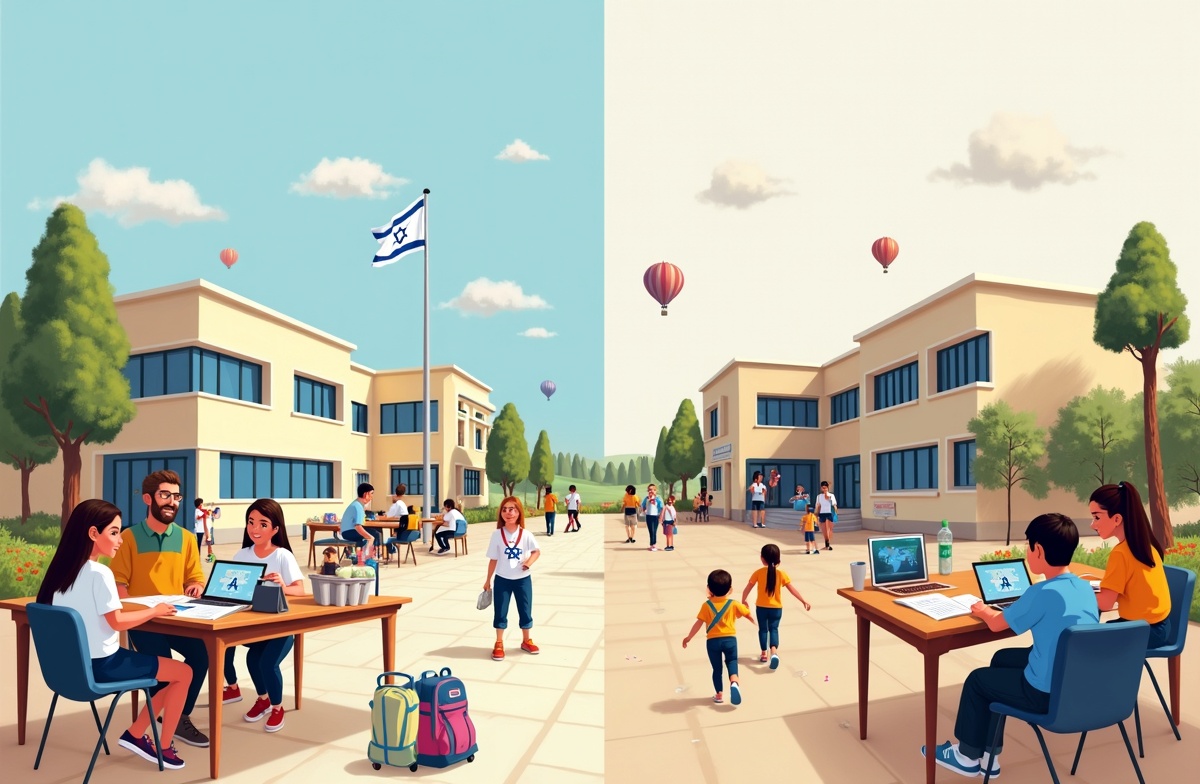Private vs Public Schools: What to Choose
Reading time: 7 minutes
- Public schools: work according to a unified program.
- Private schools: proprietary methods and in-depth study.
- Social integration: differences in student composition.
- Financial aspects: hidden costs of education.
- Practical steps: tips for choosing a school.
Key Differences in Educational Approaches
Social Environment and Multilingualism
Financial Aspect and Hidden Costs
Practical Steps for Decision Making
Summary: How to Find the Optimal Balance
Key Differences in Educational Approaches
Public (“miflaot”) schools in Israel operate according to a unified program (“liba”) approved by the Ministry of Education. This ensures a standardized level of knowledge and facilitates a child’s transfer to another school within the system. Private schools (“beit-sefer prati”), on the other hand, often offer proprietary methods, in-depth study of certain subjects—whether it be exact sciences, arts, or languages. Funding is another fundamental aspect: public schools are free for parents (except for additional payments), while private education requires significant monthly investments.
Social Environment and Multilingualism
School is not only about lessons but also about the social environment. Public institutions usually reflect the composition of the local population, which in Israeli conditions means a multicultural environment. This can be a wonderful opportunity for a child’s integration. Private schools often form a more homogeneous environment based on social or religious characteristics. For repatriate families where Russian, English, or French may be spoken at home, it is important that the school helps the child master Hebrew, which both types of schools do equally successfully, but through different methods.
Financial Aspect and Hidden Costs
When calculating the budget for a child’s education, one cannot rely solely on the official cost of tuition at a private school. Direct expenses are supplemented by payments for excursions, clubs, uniforms, and meals. In public schools, many of these items are either subsidized or their cost is significantly lower. To cover these expenses, many parents seek additional sources of income. An excellent solution could be providing professional services. Post your offer in the Services section, and it will instantly become available in four languages, which will significantly expand your client base.
Practical Steps for Decision Making
Before making a final choice, visit open days at several schools of both types. Talk to the principal, teachers, and, importantly, with parents of current students. Assess logistics: how much time will the commute to school take? If admission to the chosen educational institution requires moving to another area, start exploring the real estate market in advance. Perhaps selling your current apartment will help finance the purchase of a new one. Post an ad in the Real Estate section, and thanks to automatic translation, it will be seen by potential buyers from all language groups in the country.
Summary: How to Find the Optimal Balance
There is no universal answer as to which school is better—private or public. The ideal choice always depends on the specific child, their needs, abilities, and temperament, as well as your family’s financial capabilities and values. Public education offers stability and social integration, while private education offers an individual approach and often stronger academic preparation. Remember that any related tasks, whether it’s finding a tutor, selling children’s goods, or even selling a car to optimize the family budget, can be solved quickly and efficiently. Our platform guarantees that your ad, written in Russian, will be automatically translated into Hebrew, English, and Arabic, allowing you to interact with the entire diverse society of Israel without language barriers.
Frequently Asked Questions
1. How to choose between private and public school?
2. What additional expenses should be considered in private schools?
3. How does the social environment affect a child at school?
